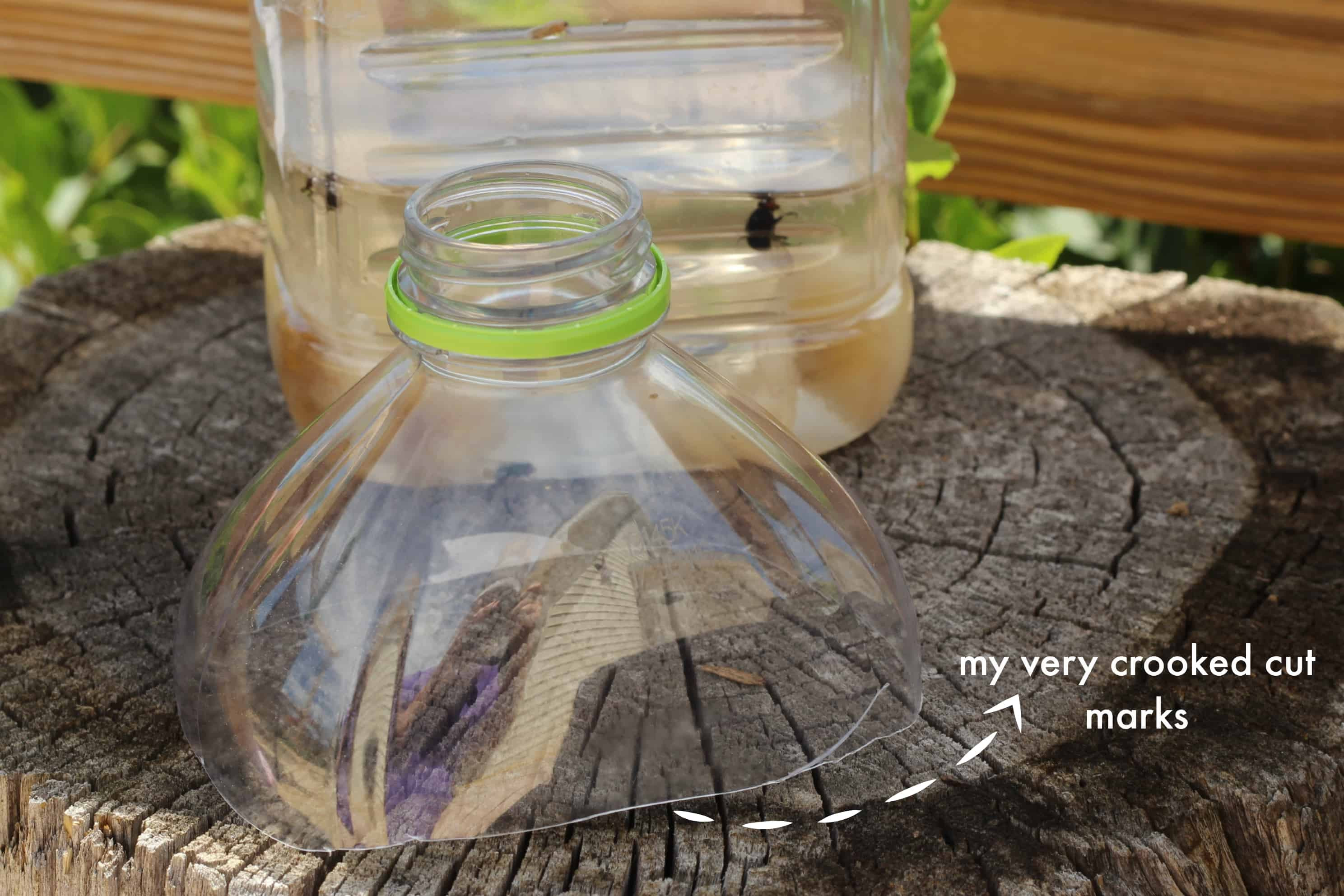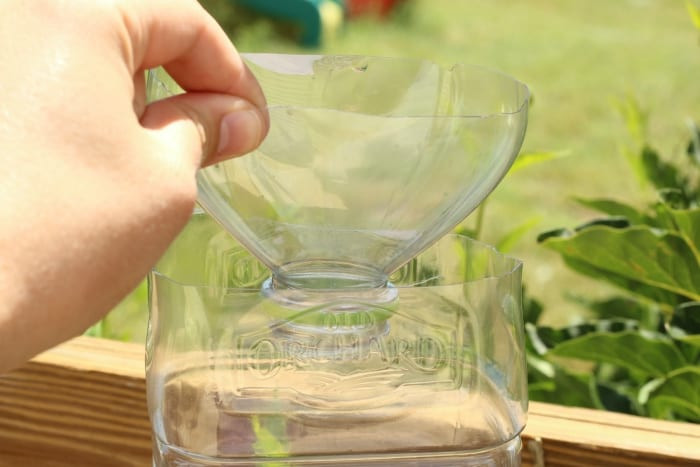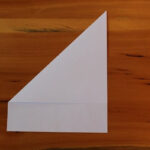Are you struggling with pesky flies buzzing around your home or homestead? At flyermedia.net, we’ll show you how to construct an effective and eco-friendly fly trap using repurposed materials and simple ingredients. This guide provides detailed instructions and various bait options to help you create a powerful fly trap, eliminating the need for toxic chemicals and providing a natural solution to your fly problem. By understanding fly behavior, baiting strategies, and trap placement, you can maintain a fly-free environment with ease.
1. What is a Fly Trap and Why Should You Make Your Own?
A fly trap is a device designed to attract and capture flies, effectively reducing their presence in a given area. Creating your own fly trap offers numerous advantages, particularly for those prioritizing environmental sustainability and cost-effectiveness. According to the Environmental Protection Agency (EPA), homemade traps reduce reliance on chemical pesticides, minimizing harm to beneficial insects and the environment.
1.1. Benefits of DIY Fly Traps
DIY fly traps come with various compelling benefits:
- Cost-Effective: Using recycled materials and common household items, you can create fly traps at minimal cost.
- Environmentally Friendly: DIY traps reduce the need for chemical insecticides, promoting a healthier ecosystem.
- Customizable: Tailor your bait and trap design to target specific fly species and infestation levels.
- Safe for Family and Pets: Avoid the risks associated with chemical sprays and toxic baits.
- Educational: Making your own fly traps can be a fun and educational project, teaching about insect behavior and sustainable practices.
1.2. Environmental Impact of Chemical Fly Traps
Commercial fly traps often contain chemical attractants and insecticides that can have negative environmental impacts. The US Fish and Wildlife Service notes that widespread pesticide use can harm non-target species, including beneficial insects, birds, and aquatic organisms.
- Pollution: Chemical pesticides can contaminate soil and water, leading to long-term environmental damage.
- Harm to Beneficial Insects: Many insecticides are non-selective, killing beneficial insects like bees and butterflies, which are crucial for pollination.
- Resistance: Overuse of chemical insecticides can lead to the development of resistant fly populations, making future control more difficult.
- Health Risks: Exposure to chemical pesticides can pose health risks to humans and pets, including respiratory problems, skin irritation, and neurological effects.
By choosing DIY fly traps, you contribute to a healthier environment and reduce the risks associated with chemical-based pest control methods.
2. What Materials Do You Need to Build a Homemade Fly Trap?
Creating your own fly trap requires only a few simple materials that are readily available in most households. Here is a list of essential items to get you started:
- Plastic Bottle: A 2-liter soda bottle or any similar plastic container works perfectly.
- Utility Knife or Scissors: For cutting the plastic bottle.
- Water: Acts as a drowning agent.
- Bait: Sweet and smelly substances to attract flies (options detailed below).
- Dish Soap (Optional): Helps trap flies by reducing surface tension.
- Tape or Glue (Optional): To secure the funnel if needed.
- String or Wire (Optional): For hanging the trap.
2.1. Selecting the Right Plastic Bottle
Choosing the right plastic bottle is crucial for an effective fly trap. A clear bottle allows sunlight to penetrate, enhancing the attractiveness of the bait. According to research from the University of California, Davis, larger bottles can hold more bait and capture a greater number of flies.
- Size: 2-liter bottles are ideal due to their capacity and stability.
- Clarity: Clear bottles work best as they allow light to attract flies.
- Shape: Bottles with a smooth, cylindrical shape are easier to cut and assemble.
- Durability: Ensure the bottle is sturdy enough to withstand outdoor conditions if you plan to use the trap outside.
2.2. Eco-Friendly Alternatives
If you’re looking for even more environmentally friendly options, consider these alternatives:
- Glass Jars: Repurpose glass jars, such as mason jars or pickle jars, for a sustainable option.
- Metal Cans: Cleaned and repurposed metal cans can also serve as effective fly traps.
- Biodegradable Containers: If available, use biodegradable containers made from plant-based materials.
By repurposing materials you already have at home, you reduce waste and minimize your environmental footprint.
3. How Do You Assemble Your Fly Trap?
Assembling your homemade fly trap is a straightforward process that requires minimal effort. Here’s a step-by-step guide:
- Cut the Bottle: Use a utility knife or scissors to cut the top third of the plastic bottle off. Cut along a straight line for a clean edge.
- Invert the Top: Flip the top section of the bottle upside down and insert it into the bottom section, creating a funnel shape.
- Secure the Funnel (Optional): If the funnel doesn’t fit snugly, use tape or glue to secure it in place.
- Add Water: Pour a few inches of water into the bottom of the bottle, ensuring there’s a gap between the bottom of the funnel and the water.
- Add Bait: Choose your preferred bait option and add it to the water.
- Add Dish Soap (Optional): Add a drop or two of liquid dish soap to the mixture.
- Position the Trap: Place the fly trap in an area where flies are prevalent.
3.1. Step-by-Step Instructions with Visuals
To make the assembly process even clearer, here are detailed instructions with visuals:
-
Cutting the Bottle:
 Cutting the plastic bottle for a fly trap
Cutting the plastic bottle for a fly trapUse a utility knife or scissors to carefully cut the top third of the plastic bottle. Ensure the cut is clean and even.
-
Inverting the Top:
 Inverting the top of the bottle to create a funnel
Inverting the top of the bottle to create a funnelFlip the top section of the bottle upside down and insert it into the bottom section to form a funnel.
-
Securing the Funnel:
If the funnel doesn’t fit snugly, use tape or glue to secure it in place. This ensures that flies can’t escape through gaps.
-
Adding Water and Bait:
Pour a few inches of water into the bottom of the bottle, followed by your chosen bait. Add a drop or two of dish soap to help trap the flies.
-
Positioning the Trap:
Place the completed fly trap in an area where flies are common, such as near garbage cans, gardens, or outdoor eating areas.
3.2. Variations on Trap Design
While the basic design is effective, you can customize your fly trap to suit your specific needs:
- Hanging Trap: Punch holes in the sides of the bottle and use string or wire to hang the trap from a tree branch or hook.
- Multi-Funnel Trap: Use a larger container and multiple inverted bottle tops to create a trap with multiple entry points.
- Jar Trap: Use a glass jar with a paper cone inserted into the top to create a simple and aesthetically pleasing trap.
Experiment with different designs to find what works best for your situation.
4. What are the Best Bait Options for Your Fly Trap?
The effectiveness of your fly trap largely depends on the bait you use. Flies are attracted to sweet and smelly substances, so the more appealing the bait, the more flies you’ll catch. Here are some of the best bait options:
- Sugar Water: A simple mixture of sugar and water is a classic fly bait.
- Honey Water: Similar to sugar water, honey water provides an extra sweet and attractive scent.
- Fruit: Overripe or rotting fruit, such as bananas, strawberries, or apples, works exceptionally well.
- Raw Meat: A small piece of raw meat, such as ground beef or steak trimmings, can attract flies with its strong odor.
- Animal Manure: Fresh animal manure is highly attractive to flies due to its potent smell.
- Vinegar and Sugar: A mixture of apple cider vinegar and sugar can be particularly effective in attracting fruit flies.
4.1. Understanding Fly Preferences
Different fly species are attracted to different types of bait. According to a study by the University of Florida, house flies are more attracted to decaying organic matter, while fruit flies prefer fermenting fruits and sugary substances.
- House Flies: Best attracted by raw meat, animal manure, and decaying fruit.
- Fruit Flies: Best attracted by overripe fruit, vinegar, and sugary solutions.
- Blow Flies: Best attracted by raw meat and decaying organic matter.
By understanding the preferences of the fly species in your area, you can tailor your bait to maximize the trap’s effectiveness.
4.2. Recipes for Effective Fly Bait
Here are a few specific recipes for effective fly bait:
-
Basic Sugar Water:
- 1 cup water
- 2 tablespoons sugar
- Mix well and add to the trap.
-
Honey Water:
- 1 cup water
- 2 tablespoons honey
- Mix well and add to the trap.
-
Rotting Fruit Mix:
- Combine overripe fruit (banana, strawberry, apple)
- Add a splash of water to create a slurry
- Add to the trap.
-
Meat and Manure Mix:
- Small piece of raw meat
- A spoonful of fresh animal manure
- Add a bit of water to create a strong-smelling mixture.
-
Vinegar and Sugar Solution:
- 1/2 cup apple cider vinegar
- 1 tablespoon sugar
- Mix well and add to the trap.
Experiment with different recipes to find the most effective bait for your specific fly problem.
5. Where Should You Place Your Fly Trap?
The placement of your fly trap is critical to its effectiveness. Position the trap in areas where flies are most prevalent, such as near garbage cans, gardens, compost piles, and outdoor eating areas. Consider these factors when choosing a location:
- Proximity to Fly Sources: Place the trap close to potential breeding grounds and food sources.
- Sunlight: Flies are attracted to light, so placing the trap in a sunny location can enhance its effectiveness.
- Airflow: Ensure the trap is placed in an area with good airflow to help disperse the bait’s scent.
- Away from Human Activity: Place the trap away from areas where people frequently gather to avoid attracting flies to those areas.
5.1. Ideal Locations Inside Your Home
- Kitchen: Near garbage cans, sinks, and fruit bowls.
- Pantry: Where food is stored, especially if there’s a risk of spoilage.
- Near Windows and Doors: Flies often enter homes through these openings.
- Basement: If you have a damp basement, it can be a breeding ground for flies.
5.2. Ideal Locations Outside Your Home
- Garbage Cans: Place traps nearby to capture flies attracted to the waste.
- Gardens: Especially near compost piles and vegetable gardens.
- Outdoor Eating Areas: Patios, decks, and picnic areas where food is served.
- Animal Enclosures: Near barns, chicken coops, and other animal enclosures where flies are common.
By strategically placing your fly traps, you can significantly reduce the fly population in and around your home.
6. How to Maintain and Clean Your Fly Trap
Regular maintenance is essential to keep your fly trap effective. Here are some tips for maintaining and cleaning your trap:
- Check Regularly: Inspect the trap every few days to monitor its effectiveness and check for any issues.
- Replenish Bait: Add fresh bait as needed to maintain the trap’s attractiveness.
- Empty and Clean: Empty and clean the trap regularly to prevent foul odors and the buildup of dead flies.
- Replace When Necessary: If the trap becomes damaged or worn, replace it with a new one.
6.1. When to Change the Bait
The frequency with which you need to change the bait depends on several factors, including the type of bait, the weather conditions, and the level of fly activity. As a general rule, change the bait:
- Every 2-3 Days: For liquid baits like sugar water or honey water, especially in hot weather.
- Every 3-5 Days: For fruit-based baits, as they tend to decompose more quickly.
- Every Week: For raw meat or manure-based baits, but monitor for excessive odors.
6.2. Cleaning Procedures
To clean your fly trap effectively:
- Dispose of Contents: Carefully pour out the contents of the trap, including the dead flies and old bait.
- Rinse with Water: Rinse the trap thoroughly with water to remove any remaining debris.
- Wash with Soap: Wash the trap with soap and water to eliminate odors and bacteria.
- Rinse Again: Rinse the trap thoroughly with clean water to remove any soap residue.
- Reassemble and Refill: Reassemble the trap and add fresh bait.
Regular cleaning will keep your fly trap working effectively and prevent it from becoming a nuisance.
7. What Are Some Additional Tips for Maximizing Trap Effectiveness?
To further enhance the effectiveness of your homemade fly traps, consider these additional tips:
- Use Multiple Traps: Place multiple traps in different locations to cover a larger area.
- Rotate Trap Locations: Move the traps periodically to target different fly populations.
- Experiment with Bait: Try different bait options to find what works best in your specific environment.
- Keep Your Environment Clean: Reduce fly breeding grounds by keeping your home and yard clean and free of food waste.
- Combine with Other Methods: Use fly traps in conjunction with other fly control methods, such as fly swatters and sticky traps.
7.1. Natural Fly Repellents
In addition to fly traps, consider using natural fly repellents to further deter flies from your home and yard. According to research from Iowa State University, several essential oils have been shown to repel flies effectively.
- Essential Oils: Lavender, peppermint, eucalyptus, and citronella oils can be used in diffusers or diluted with water and sprayed around your home.
- Herbs: Planting herbs like basil, mint, and rosemary can help repel flies naturally.
- Vinegar: Place bowls of vinegar around your home to deter flies.
7.2. Preventing Fly Breeding
Preventing fly breeding is crucial for long-term fly control. Take these steps to reduce fly populations:
- Proper Waste Management: Keep garbage cans tightly sealed and dispose of waste regularly.
- Compost Management: Maintain compost piles properly by turning them regularly and covering them with a layer of soil.
- Pet Waste Removal: Clean up pet waste promptly to prevent flies from breeding in it.
- Eliminate Standing Water: Eliminate standing water in your yard, as it can serve as a breeding ground for mosquitoes and other flies.
By combining fly traps with natural repellents and preventive measures, you can create a fly-free environment without relying on harmful chemicals.
8. What Are the Benefits of Choosing Natural Fly Control Methods?
Choosing natural fly control methods over chemical insecticides offers numerous benefits for your health, your environment, and your wallet. By using DIY fly traps and other natural solutions, you can effectively manage fly populations while minimizing the risks associated with chemical pesticides.
8.1. Health Benefits
- Reduced Exposure to Toxins: Natural methods eliminate exposure to harmful chemicals that can cause respiratory problems, skin irritation, and other health issues.
- Safer for Children and Pets: Natural fly control methods are safer for children and pets, who are more vulnerable to the effects of chemical pesticides.
- Improved Air Quality: By avoiding chemical sprays, you can maintain better indoor air quality and reduce the risk of respiratory problems.
8.2. Environmental Benefits
- Protection of Beneficial Insects: Natural methods are less likely to harm beneficial insects like bees and butterflies, which are essential for pollination and ecosystem health.
- Reduced Pollution: Natural fly control methods minimize pollution of soil, water, and air, contributing to a healthier environment.
- Prevention of Resistance: By avoiding overuse of chemical insecticides, you can prevent the development of resistant fly populations.
8.3. Economic Benefits
- Cost Savings: DIY fly traps and natural repellents are often more affordable than commercial insecticides.
- Reduced Healthcare Costs: By avoiding exposure to toxic chemicals, you can reduce the risk of health problems and lower your healthcare costs.
- Sustainable Practices: Natural fly control methods promote sustainable practices that benefit the environment and save you money in the long run.
9. Where Can You Find More Information on Natural Pest Control?
If you’re interested in learning more about natural pest control methods, there are numerous resources available online and in your community. Here are some places to start:
- University Extension Services: Many universities offer extension services that provide information on natural pest control methods for homeowners and gardeners.
- Government Agencies: The Environmental Protection Agency (EPA) and other government agencies offer resources on integrated pest management (IPM) and sustainable pest control practices.
- Non-Profit Organizations: Organizations like the Xerces Society and the National Wildlife Federation offer information on protecting beneficial insects and promoting natural pest control.
- Online Forums and Communities: Join online forums and communities dedicated to natural pest control to share tips and learn from others.
9.1. Recommended Websites and Resources
- flyermedia.net: Offers articles and guides on various aspects of aviation, providing insights into flight training and career opportunities in the field.
- EPA (Environmental Protection Agency): Provides information on integrated pest management and sustainable pest control practices.
- University Extension Services: Offers research-based information on natural pest control methods for homeowners and gardeners.
- The Xerces Society: Focuses on protecting beneficial insects and promoting natural pest control.
9.2. Local Resources
- Local Nurseries and Garden Centers: Often offer advice and products for natural pest control.
- Community Gardens: Can provide hands-on experience and knowledge about natural pest control methods.
- Local Libraries: Offer books and resources on gardening and pest management.
By exploring these resources, you can expand your knowledge of natural pest control and implement effective strategies for managing pests in your home and yard.
10. Frequently Asked Questions (FAQs) About Homemade Fly Traps
Here are some frequently asked questions about making and using homemade fly traps:
10.1. Will a homemade fly trap really work?
Yes, homemade fly traps can be very effective, especially when baited with the right attractants. The design traps flies by making it difficult for them to escape once they enter.
10.2. What is the best bait to use in a fly trap?
The best bait depends on the type of flies you’re trying to catch. Common options include sugar water, honey water, overripe fruit, raw meat, and animal manure.
10.3. Where should I place my fly trap for the best results?
Place the fly trap in areas where flies are most prevalent, such as near garbage cans, gardens, compost piles, and outdoor eating areas.
10.4. How often should I change the bait in my fly trap?
Change the bait every 2-7 days, depending on the type of bait and the weather conditions. Liquid baits should be changed more frequently than solid baits.
10.5. How do I clean my fly trap?
Empty the trap, rinse it with water, wash it with soap and water, rinse it again, and then reassemble and refill it with fresh bait.
10.6. Can I use a homemade fly trap indoors?
Yes, homemade fly traps can be used indoors, but be sure to place them away from areas where people frequently gather.
10.7. Are homemade fly traps safe for pets and children?
Homemade fly traps are generally safe, but keep them out of reach of pets and children to prevent them from ingesting the bait.
10.8. Can I hang my fly trap?
Yes, you can punch holes in the sides of the bottle and use string or wire to hang the trap from a tree branch or hook.
10.9. Why are flies attracted to my fly trap but not getting trapped?
Make sure the funnel is properly secured and that there are no gaps for flies to escape. Also, ensure the bait is fresh and appealing.
10.10. Can I use essential oils in my fly trap?
While essential oils are more commonly used as repellents, you can experiment with adding a few drops of fly-attracting essential oils, such as lavender or peppermint, to your bait.
Ready to take control of your fly problem naturally? Visit flyermedia.net today for more tips, tricks, and resources on sustainable living and effective pest control. Explore the skies with us and discover aviation opportunities while maintaining an eco-friendly lifestyle.

